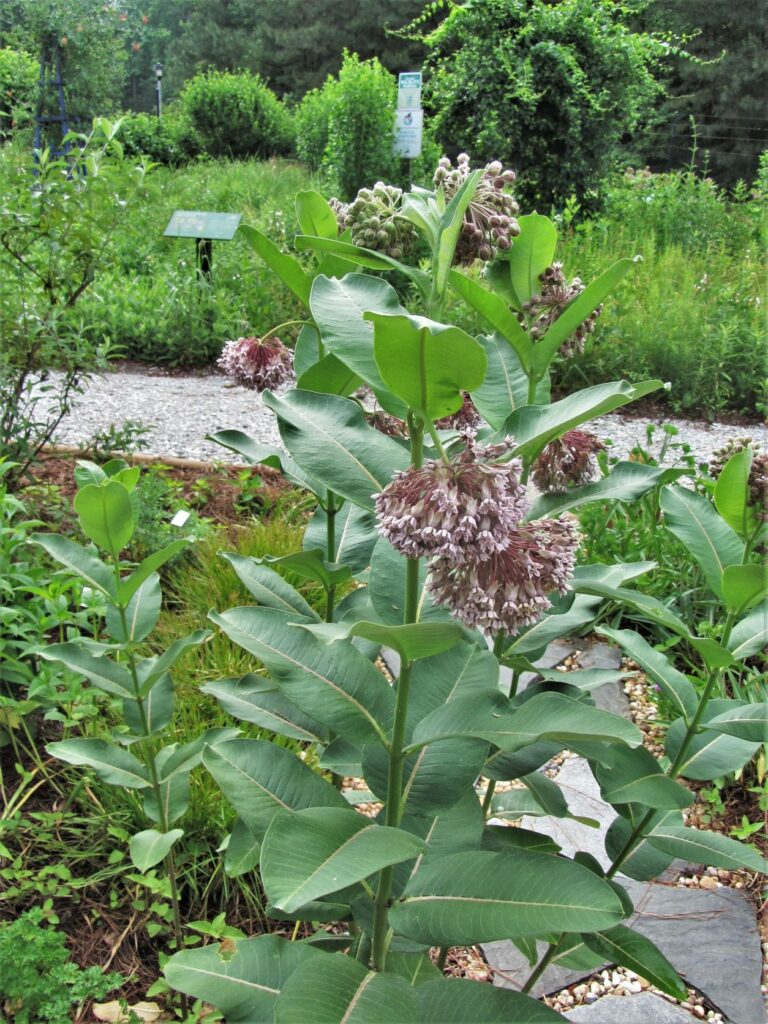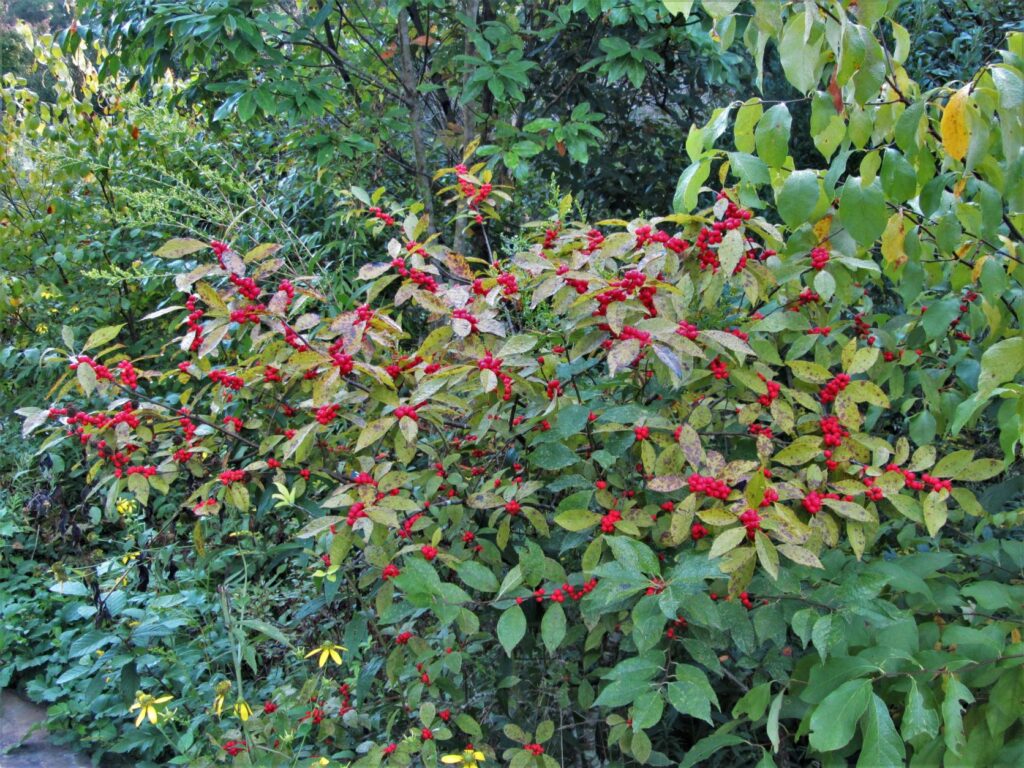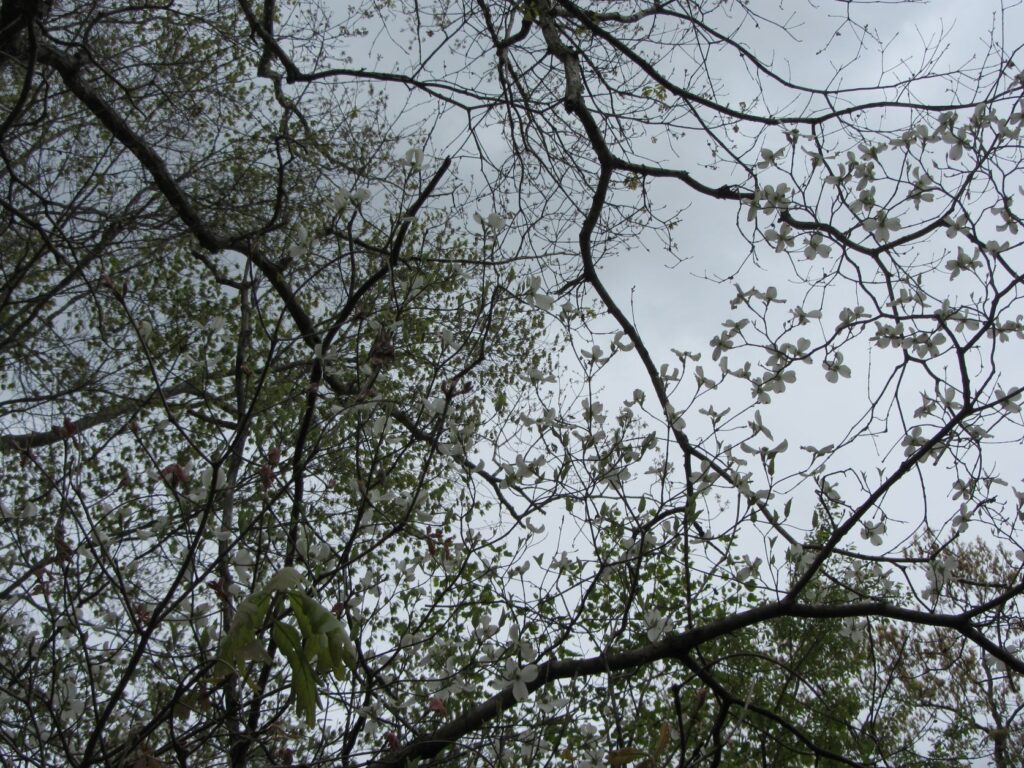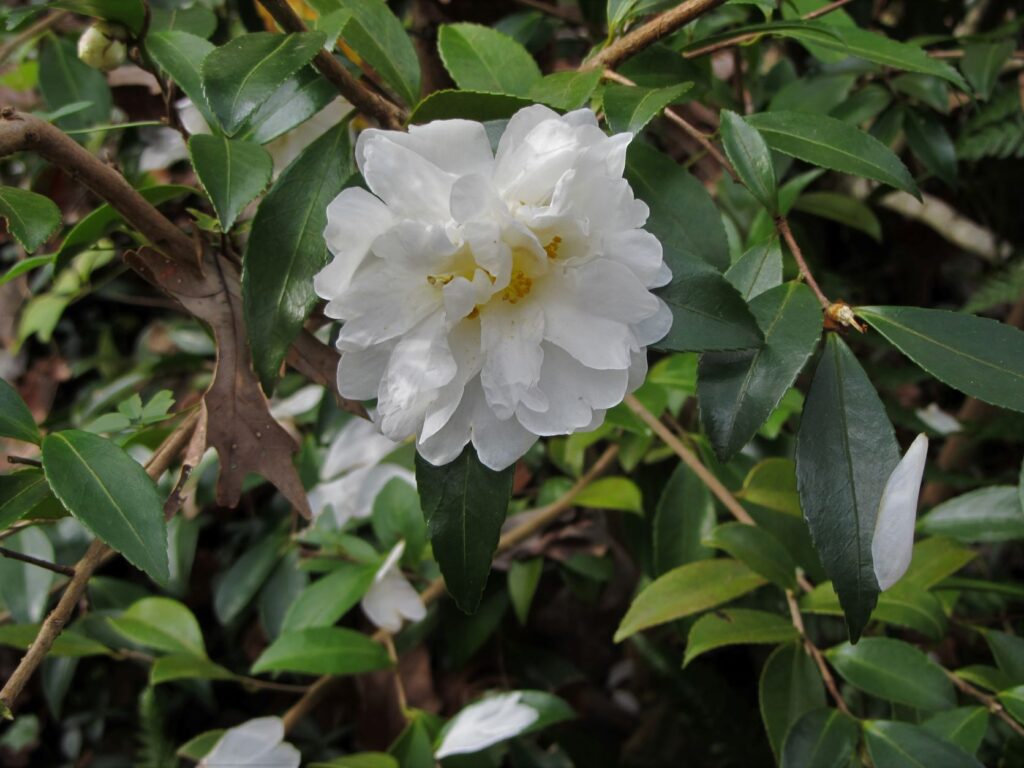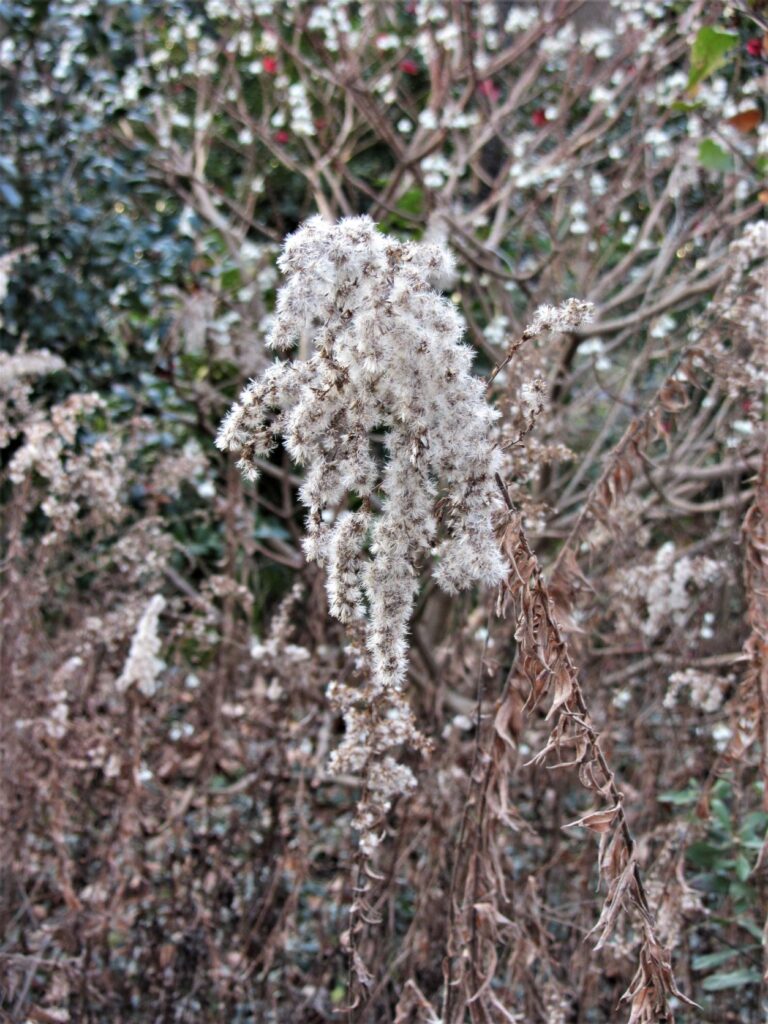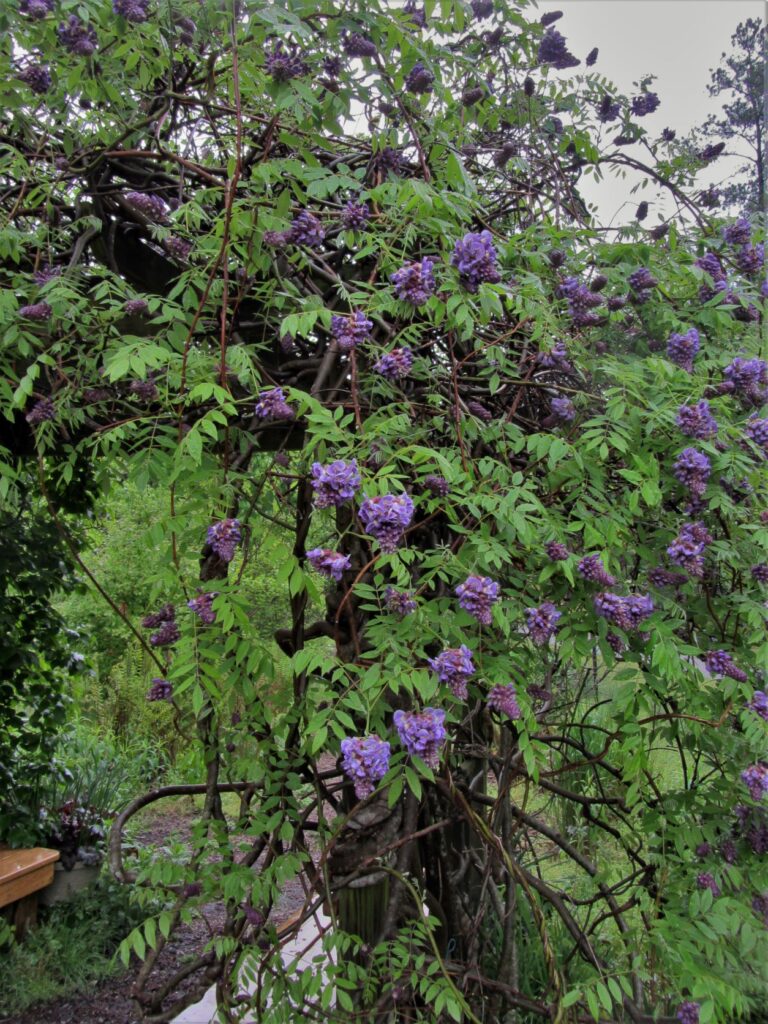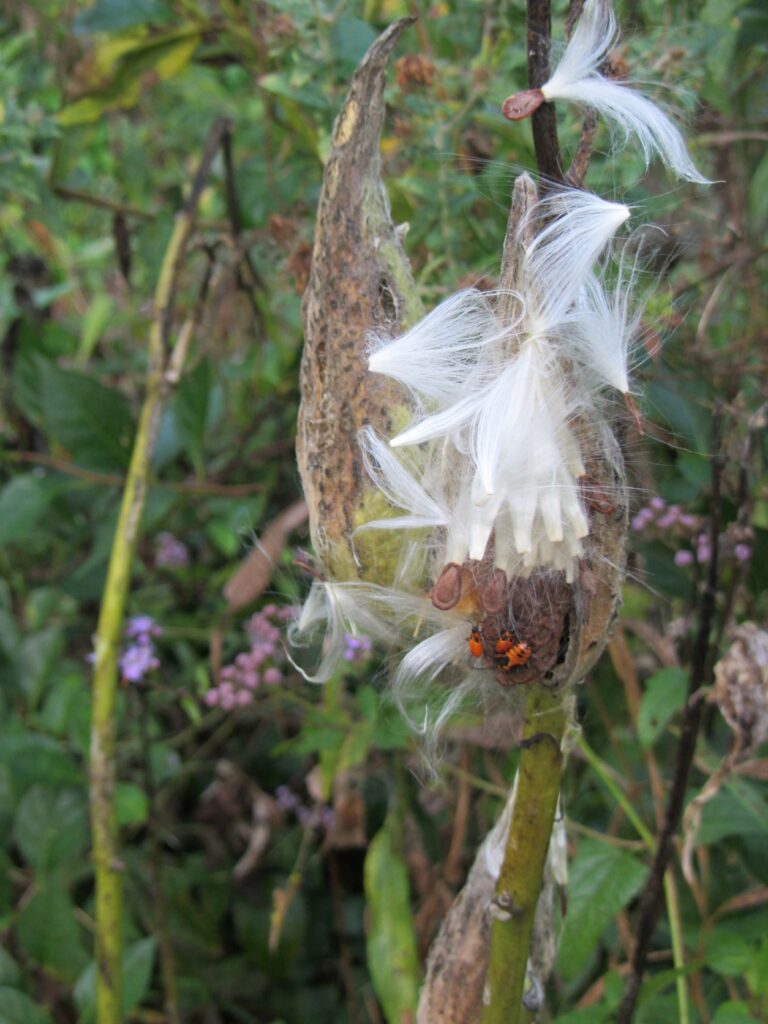Making the Choice: Native v. Imported Plants
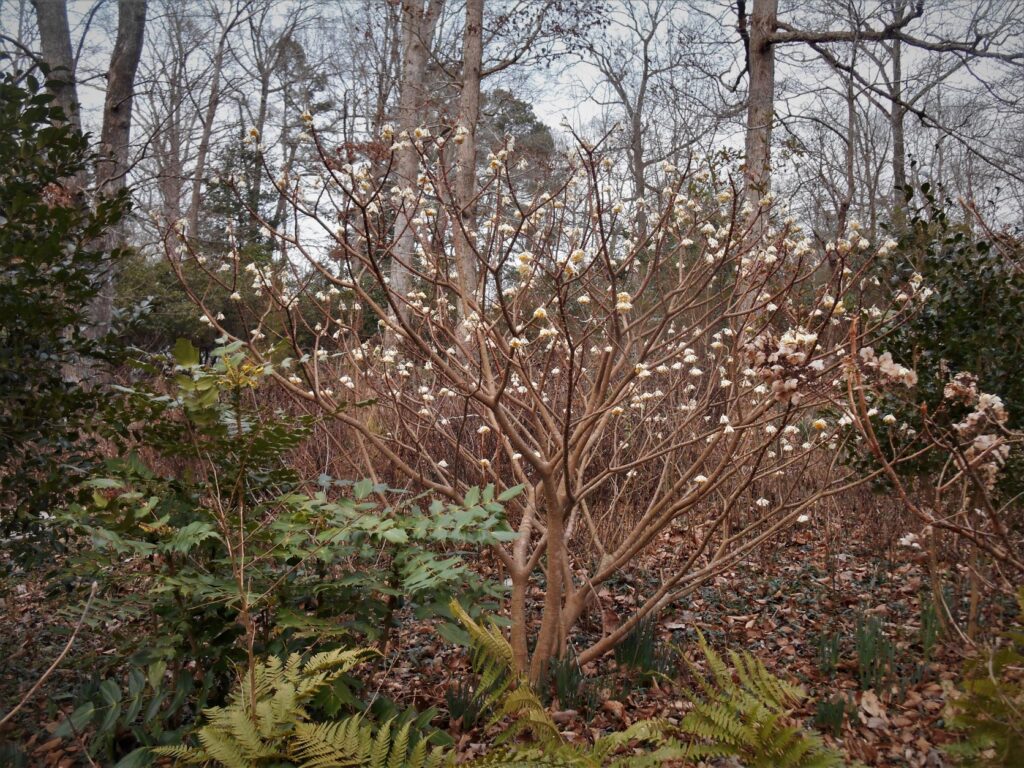
Edgeworthia chrysantha, Chinese paper bush, blooms through the winter, feeding many pollinators before native trees and shrubs bloom in our area. Here is is surrounded with evergreen Dryopteris erythrosora, Oregon grape holly, Camellia sasanqua, and emerging bulbs. Photo in early February 2020.
What do you consider when choosing plants for your home and yard? We all have a checklist of criteria in the back of our minds. Our criteria are very personal to our own needs and situation. You may not purchase and plant as many plants as I do each year, but I’m sure that you enjoy the choosing and the planting just as much.
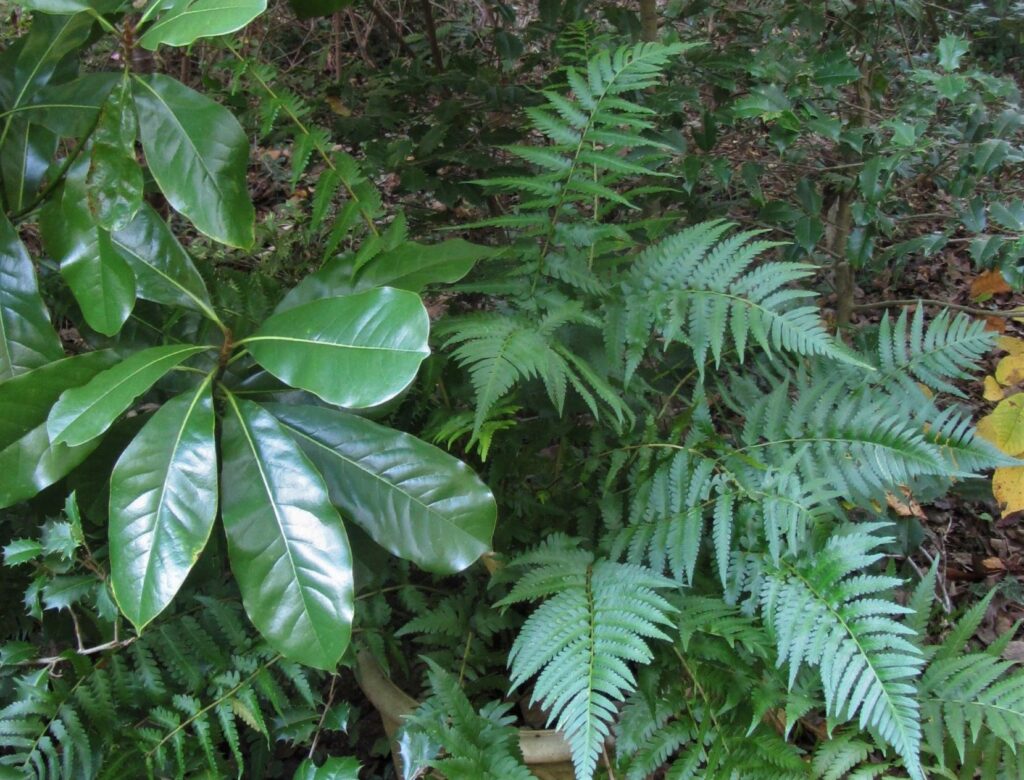
A young seedling Magnolia grandiflora shades native Dryopteris x australis. The Magnolia is indigenous to the southeastern coastal plain to our south, but has naturalized in Virginia. Photo from December 2021
We gardeners have been encouraged to plant more native plants for quite a while now. And there are some very good reasons for us to plant natives. There are also some very good reasons to plant some non-native plants in our lives, and we need to acknowledge them so we can choose plants consciously, for a variety or purposes, and feel good about our choices.
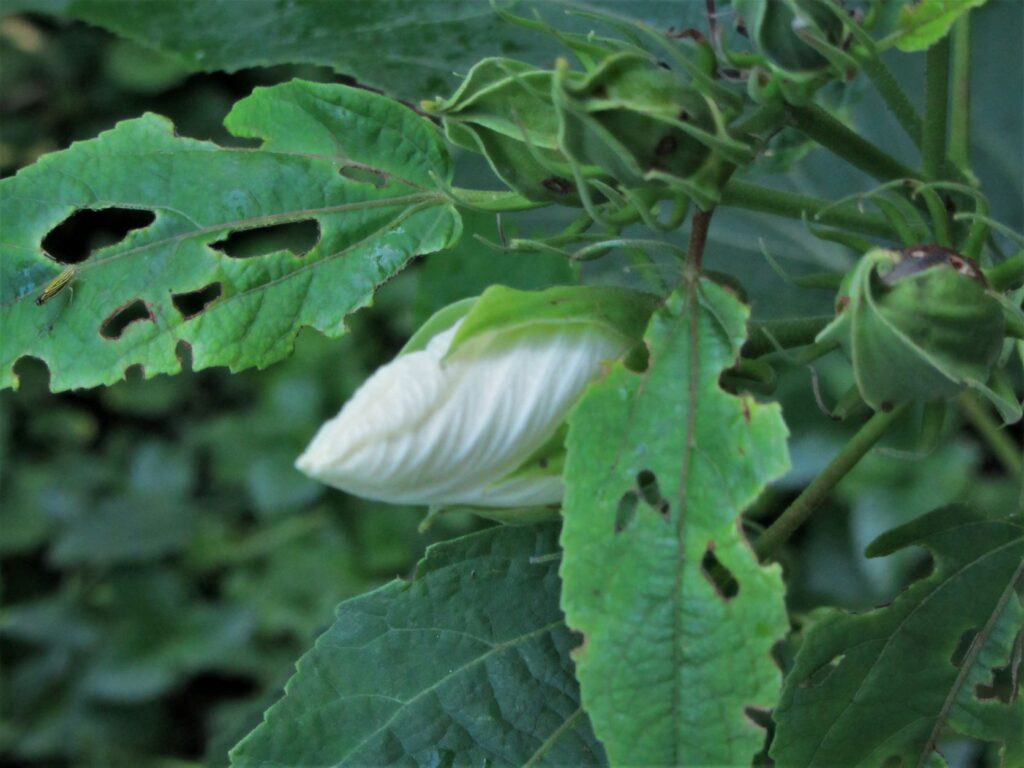
Hibiscus moscheutos grows wild in the wetlands of James City County. It seeds itself around with enthusiasm.
Many of us learned about the value of native plants from a book called Bringing Nature Home by Dr. Douglas Tallamy. It is an excellent book and I encourage you to study it and use it as a desk reference. Dr. Tallamy is an entomologist, a biologist who studies insects. He is chiefly concerned with supporting the insects that support the entire web of life in our ecosystems.
Dr. Tallamy rightly points out that native plants feed our insects. Many insects, like the Monarch butterfly, will eat only a single genus of leaves in its larval stage. When the milkweed, Asclepias species, disappears, so do the Monarch butterflies. Butterflies, moths, and other insects rarely lay their eggs and grow through their larval stages on non-native plants.
Insects and insect larvae are a crucial food source for native birds, and many other animals. Native plants also produce nectar, and a variety of drupes, seeds, nuts, berries and other fruits, valued as food for people and wildlife. Native plants form the most crucial layer of most food chains, and the entire web of life. Dr. Tallamy and his colleagues encourage gardeners to support their local ecology to conserve native plant and animal species through how they manage their own home gardens.
Another reason to grow native plants is to preserve their species, and the to preserve the diversity of our indigenous flora. When native plants are crowded out, and become rarer and rarer in the landscape, we run the risk of losing them entirely. This has already happened with many indigenous plant species common prior to European colonization in North America. We have destroyed the native environments these plants need to survive without finding a way to bring them into our neighborhoods, parks, and corporate landscapes.
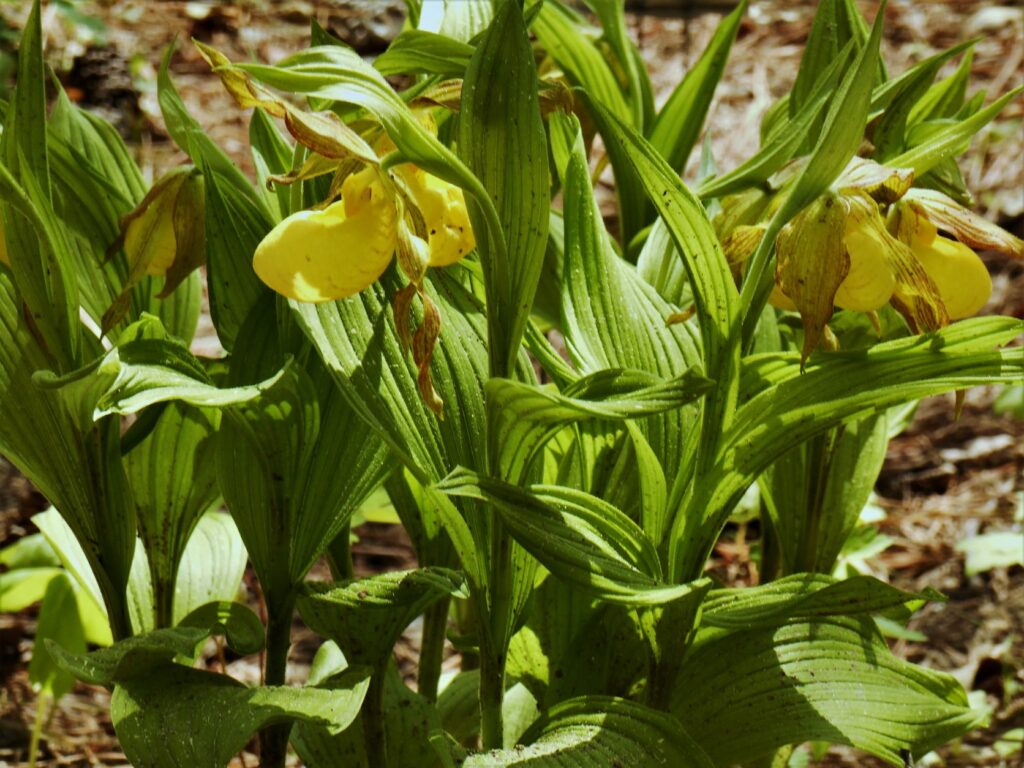
Cypripedium parviflorum, the Large Yellow Lady’s-slipper orchid, is a rare wildflower that grows primarily in woodlands and needs a high percentage of organic matter in the soil. It blooms in April here in the Calcareous Ravine at the Williamsburg Botanical Garden.
Many of our native plants require very specific conditions to thrive. Conditions we may not be able to replicate at home no matter how hard we try. The plant not only needs a particular combination of temperature, light and moisture, it also needs its own preferred soil composition and chemistry. For example, some native orchids need the mycorrhizal fungi attached to the roots of certain trees to thrive, because the fungi allow nutrients from the tree to help support the orchids during several points in their life cycle.
We are cautioned to not transplant native wildflowers from their home to ours, because without the particular conditions they need to thrive, they generally die. We may want to help support the population of an endangered species by growing that native plant at home. If we buy native plants from ‘collectors’ who dig them in the wild, we will support just the opposite, as they dig plants out of an environment where they thrive, to sell them. It is wise to ask whether a vendor collects or propagates their plants before buying, and also know whether or not we can provide all of the conditions a plant needs to thrive before planting it in our own garden.
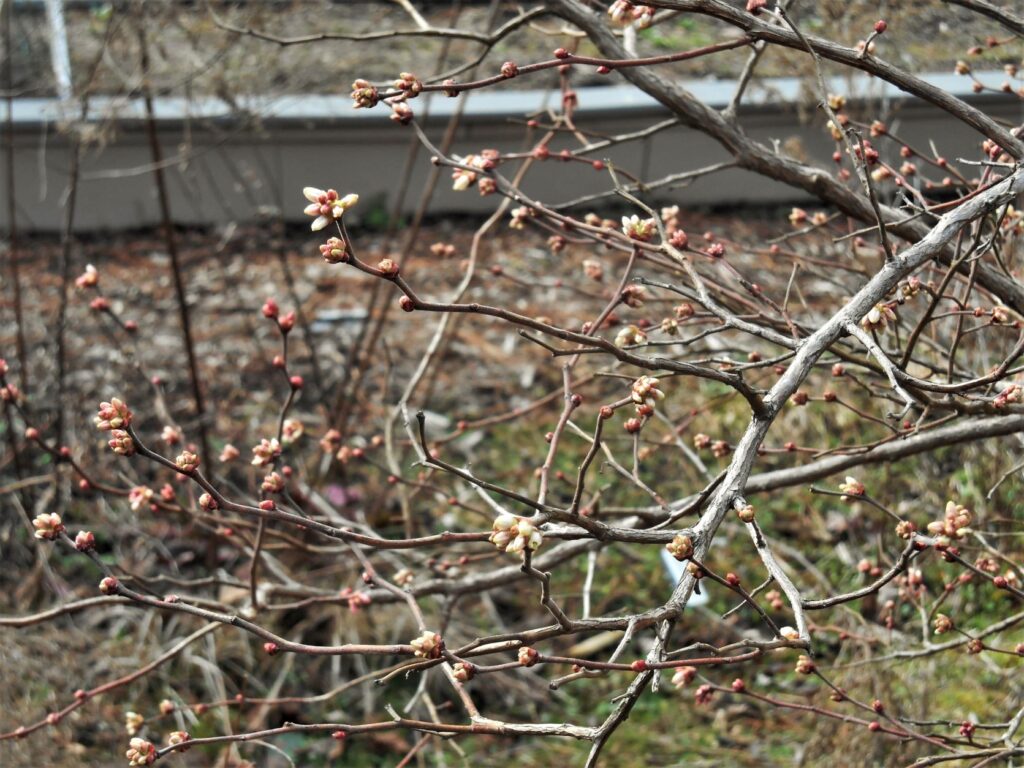
Native Vaccinium fuscatum, early blueberry, begins to bloom in February in our area. Photo from early February 2020.
Many of us are educating ourselves about native plants and finding ways to work them into our home landscapes. The Virginia Native Plant Society, Claytonia Chapter, is an excellent local resource. They offer walks in local parks, annual plant sales, newsletters and conferences to make native plants more accessible. The Virginia Botanical Associates worked with VNPS members, universities and other experts, to produce the Digital Atlas of the Virginia Flora, which is the authoritative resource for learning about native plants in the Commonwealth.
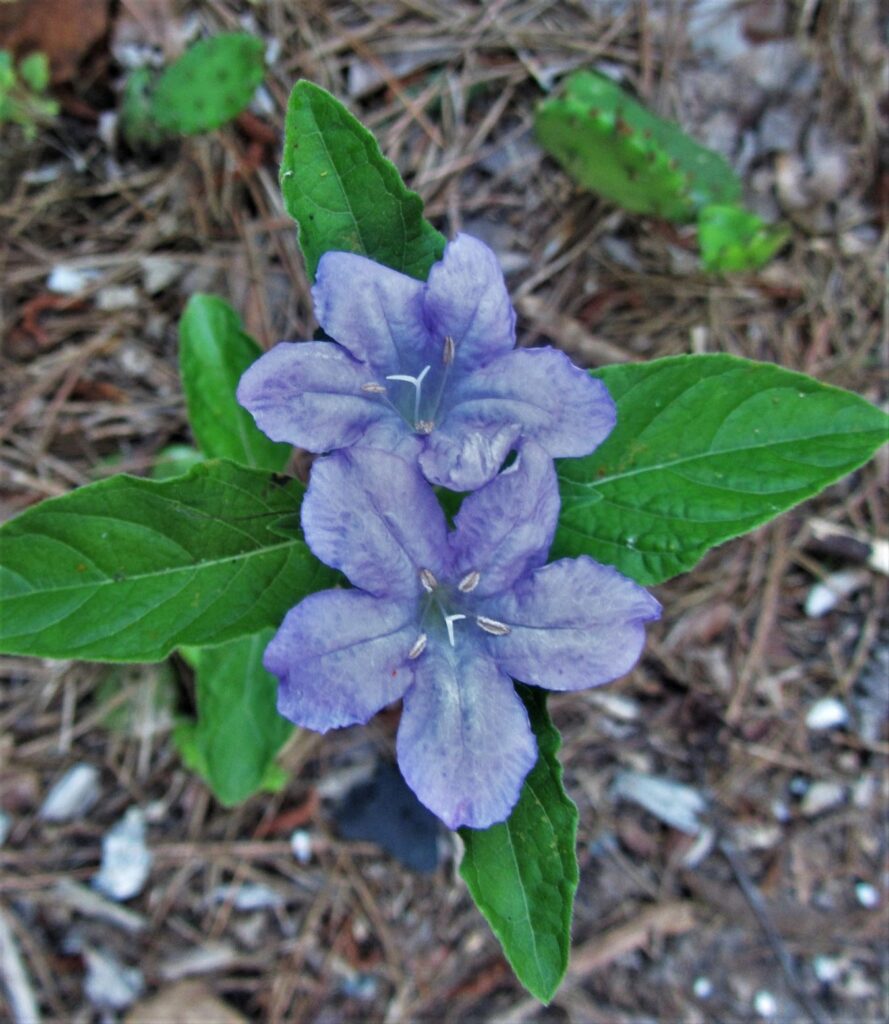
Ruella caroliniensis, Wild Petunia, is a common native wildflower in our area, and a host plant for the Common Buckeye butterfly.
Adding more native plants to our garden can be tough, because native plant species aren’t always easy to find in plant shops. Sometimes we aren’t sure which plants on offer are indigenous natives in our area. Plants once native to other regions, like the Magnolia grandiflora, have colonized regions further away as the climate has warmed. We’ve also brought plants from one region of North America to another, because we value them. Native Americans were already doing this to some extent before colonization.
There are a few finer points to the conversation about native v. imported plants that may help ease our conscience as we stroll the aisles of the garden center. First, a very few keystone genera of native plants support the vast majority of native insects (see the list below). Some of these feed insect larvae with their leaves. Others are also important for providing pollen to native bees. We can support hundreds of different insect species by planting oak trees in our yard, for example.
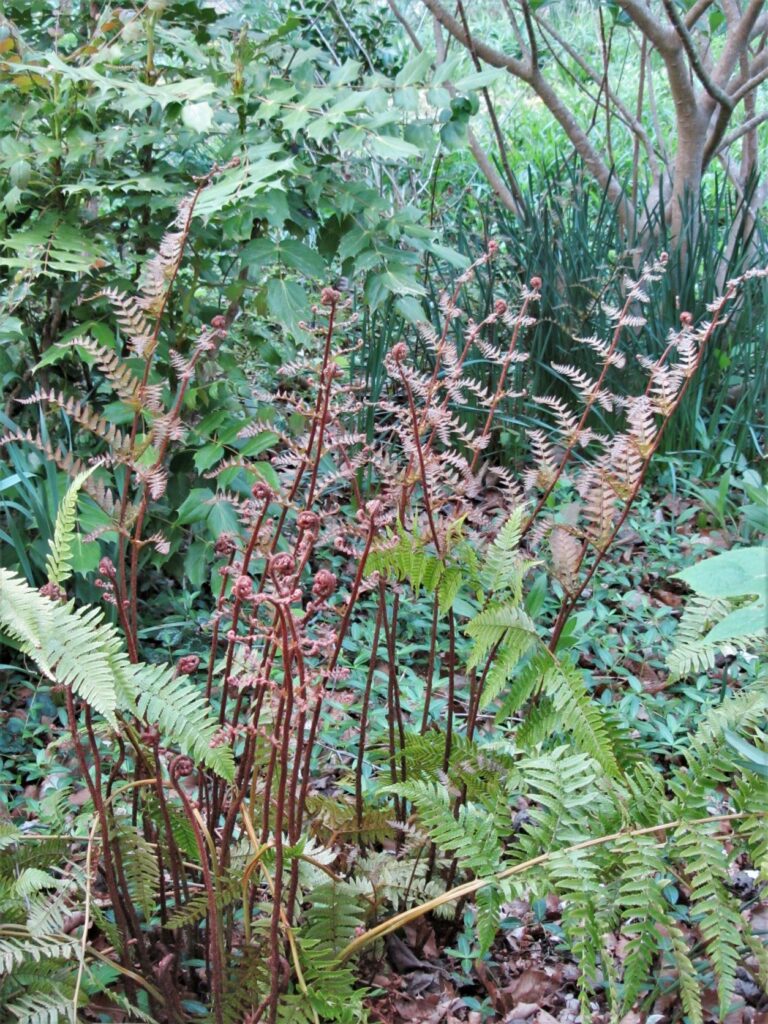
Asian Dryopteris erythrosora ‘Brilliance’ remains evergreen through the winter. New fronds emerge in shades of copper all spring and into the fall. Deer and rabbits ignore it. Photo early spring 2021
There are many native plant species that just don’t have that large of an impact on insect life in our garden, because they aren’t host plants. We can substitute Asian Dryopteris erythrosra for native Dryopteris ludoviciana without harming a single insect species. Your friends may not even notice the difference. When choosing natives, make the biggest impact by planting keystone species that support the greatest number of other animal species.
Many of us design pollinator gardens to support a variety of pollinating insects and hummingbirds. Insects generally aren’t picky about whether their nectar comes from a native or a non-native plant. They will drink as happily from Asian Hibiscus syriacus flowers as from Hibiscus moscheutos. And from a practical point of view, that Rose of Sharon blooms longer, and produces more flowers per square foot, than our native rose mallow.
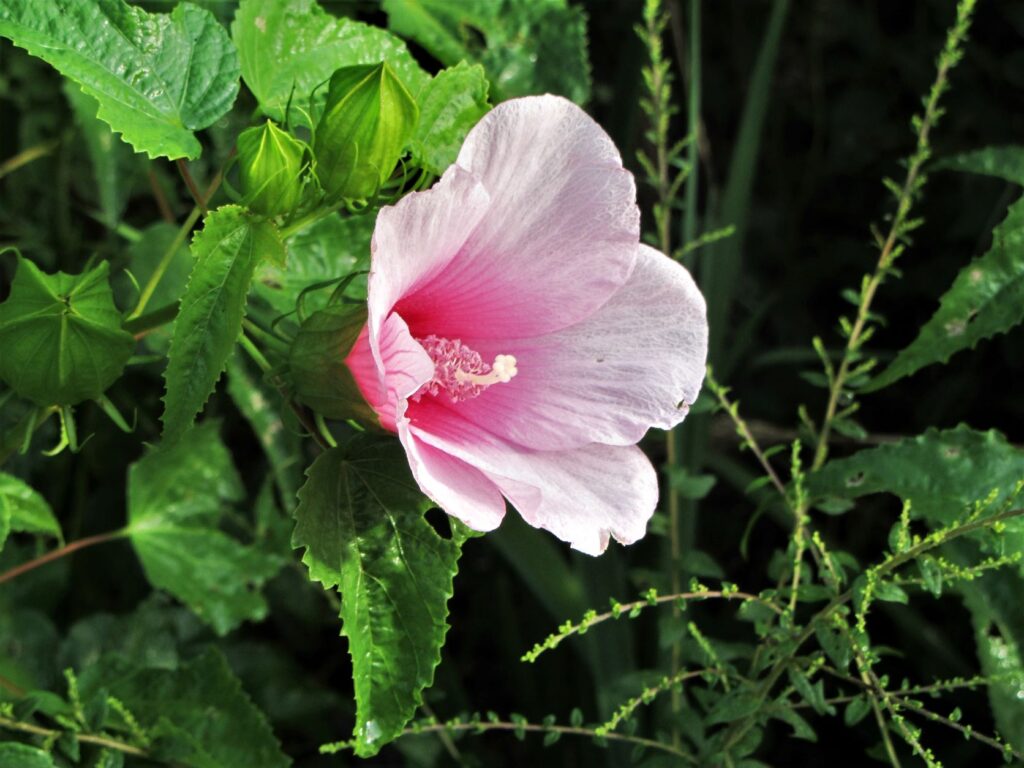
Hibiscus moscheutos attracts bees, hummingbirds, butterflies, and many other pollinating insects. Photo August 2022
As our climate warms, we enjoy warm days earlier each spring and later each fall. Hungry native bees, and other pollinators, emerge weeks before most of our native plants bloom. They depend on imported plants like Hellebores, and many late winter, early spring bulbs to make it through those cold winter days. Very early Crocus, Galanthus, Scilla, and Muscari feed a wide variety of insects when few, if any, native flowering plants have bloomed. We may think of European and Asian perennials as an indulgence in our own need for colorful winter flowers, when in fact they are important to support our native wildlife.
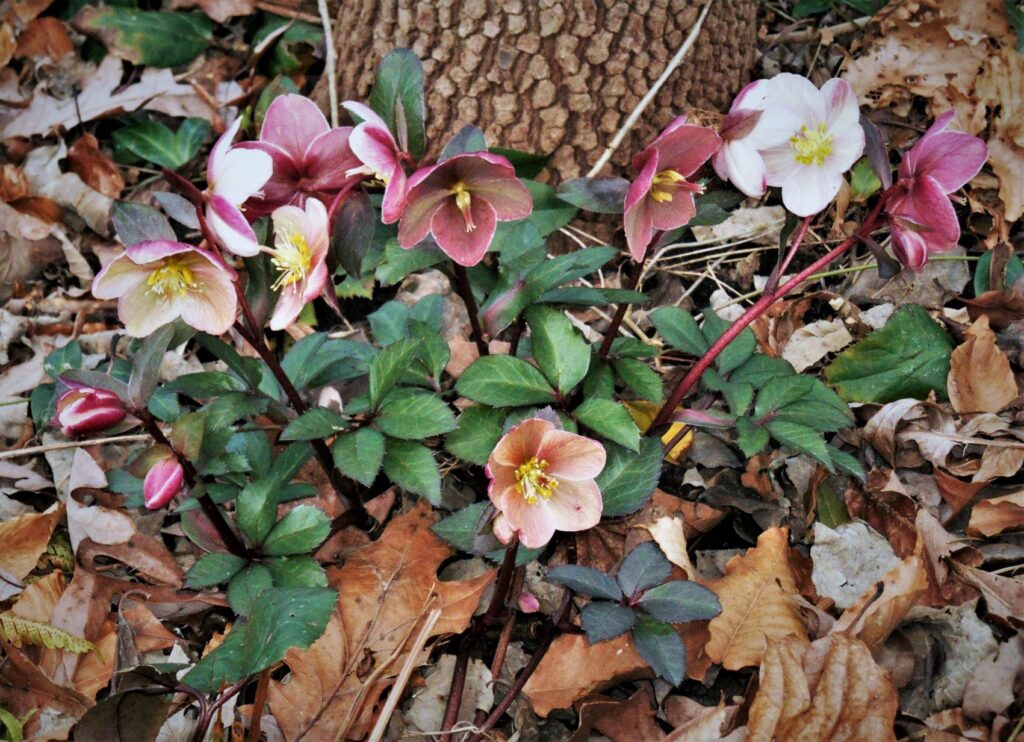
Hybrid hellebores, from Europe, begin to bloom between December and February, depending on the cultivar. They provide both pollen and nectar when pollinators visit on warmish days. Photo from January 2020
Shrubs such as Asian Camellias, Japanese Pieris, Chinese Edgeworthia, and Oregon Grape Holly (once Mahonia, and now Berberis aquifolium) bloom and feed insects through the winter months. Camellia sasanqua bloom from October through January, while Camellia japonica bloom in March through May. Asian, as well as native holly shrubs, all bloom in late winter to early spring.
Even common spring weed/wildflowers that support early pollinators, like dandelions and clover, came to North American from Europe. A large number of these plant species brought to North America in Colonial times, like plantain and deadnettle, have naturalized over the years. Only someone who studies such things could tell you that these plants aren’t natives.
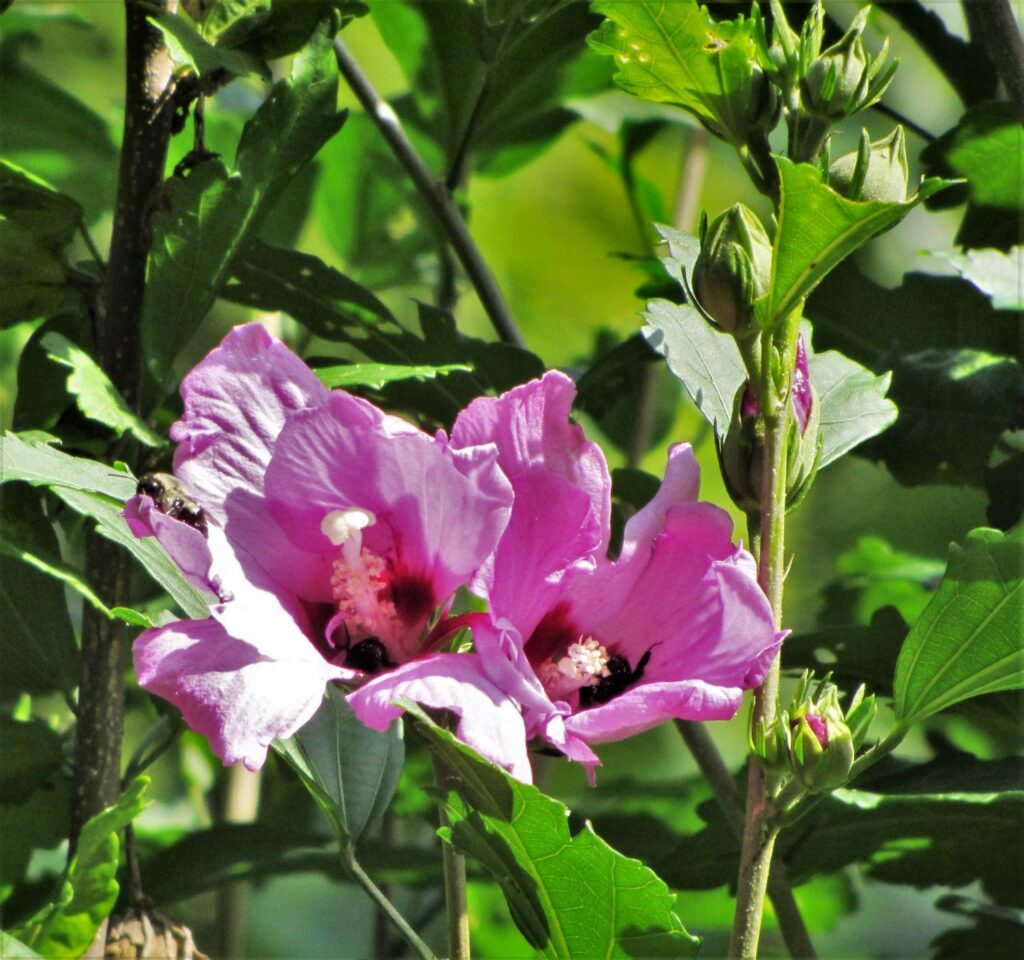
Rose of Sharon, Hibiscus syriacus, is a woody shrub imported from Asia. It naturalizes easily and produces abundant seeds for birds through the winter.
I wonder, sometimes, if our subjective prejudice against imported plants has any congruence with other prejudices, such as the prejudice often experienced by immigrants or members of cultural and religious minorities. It is time to find a way past our parochial feelings, valuing some people and things from one region above those from another. We inhabit one Earth. We breathe the same air and drink the same water; soak in the same sunshine and pursue our common needs.
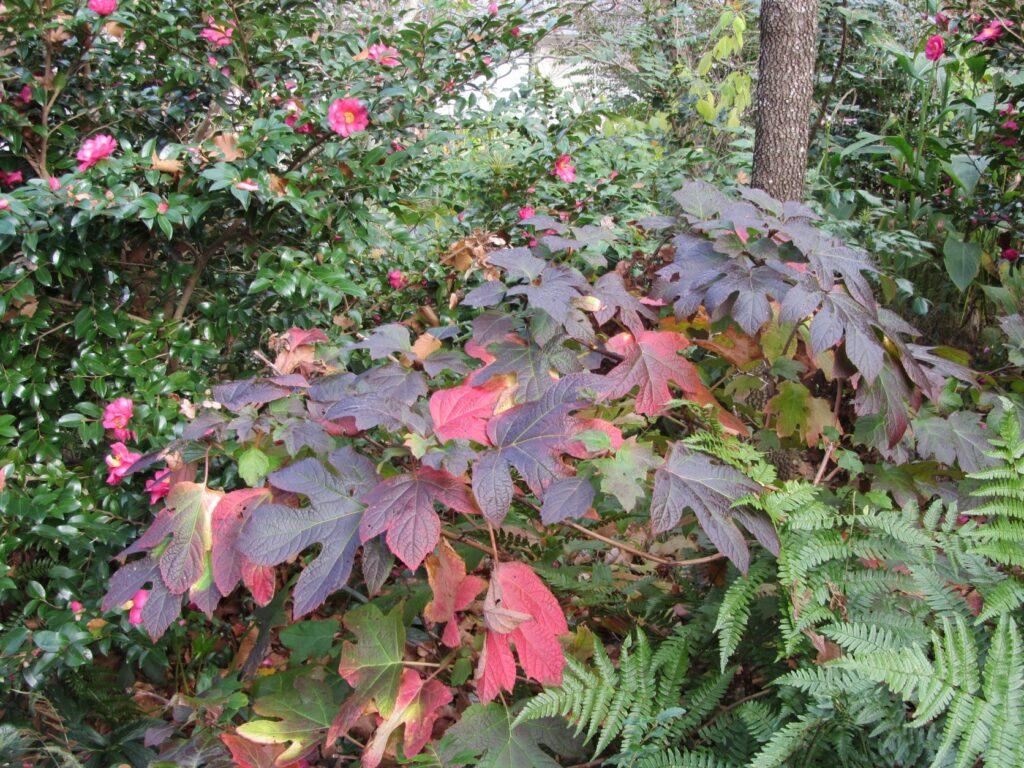
Native oakleaf Hydrangea quercifolia turns scarlet each autumn, and holds its flowers from May through frost. It grows here with fall blooming Camellia sasanqua. Photo from December 2021
Plants, like people, whether from Europe, Asia, India, Africa, Australia, or the Americas, share more similarities than differences. You’ll find different species of a single genus on several different continents. Geologists theorize that at one time, for over 100 million years, there was a single large landmass on our planet known as “Pangea” rising above a single ocean. This landmass didn’t break up, and the continents we know today begin to drift apart from one another, until the early Jurassic period. This helps us understand why some very ancient plants, like some ferns, are nearly identical across multiple continents today. When we speak of ‘native plants,’ perhaps we can broaden our understanding to plants native to our one Earth.
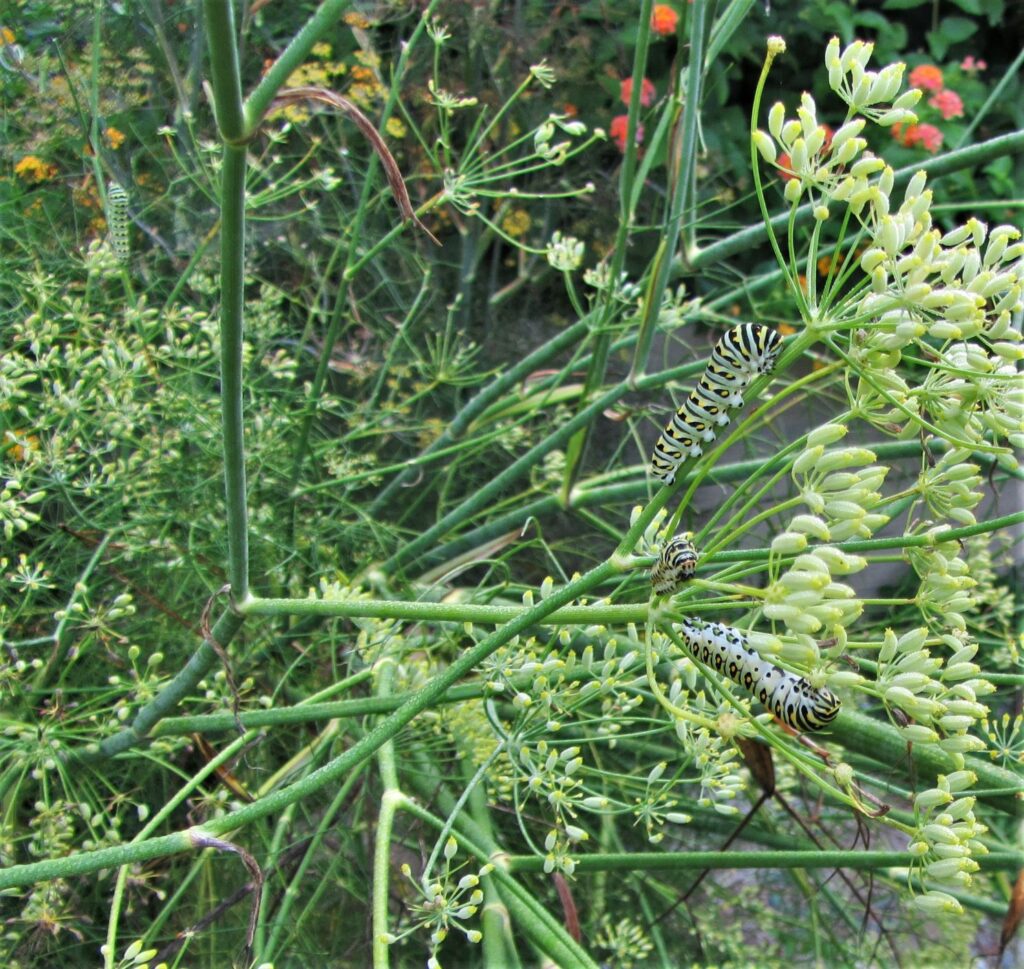
Fennel, a European herb, hosts many types of swallowtail butterfly larvae, along with parsley, dill, and rue. Pollinators visit its flowers, and its seeds are popular with both birds and people. Its leaves and root are also favorites in French cuisine. Photo from July 2022
Let’s think of plants functionally, when choosing them for the gardens we tend, rather than choosing categorically. Functional plants serve multiple purposes within the ecosystem: they convert sunlight into energy for other creatures, release oxygen and water vapor, they hold ground against erosion and filter out pollutants. Plants structure our landscapes, break wind, shade homes, create barriers, and provide color. Plants shelter animals, attract wildlife, feed us, and bring us joy.

Native Wisteria frutescens covers this trellis and requires dedicated pruning each year to keep it in bounds. Photo from January 2020
As we consider a plant’s function, we also note its growth habit. How tall and wide will it grow? Is it a shade tree, a ground cover, or a shrub? Is the plant evergreen, deciduous, or ephemeral? How far will it seed or spread? If it is a vine, how far will it climb? Will it crowd out other plants? One must be very careful with some native plants, like goldenrod and obedient plant, because they spread themselves around so aggressively, shading and starving other desirable species nearby.
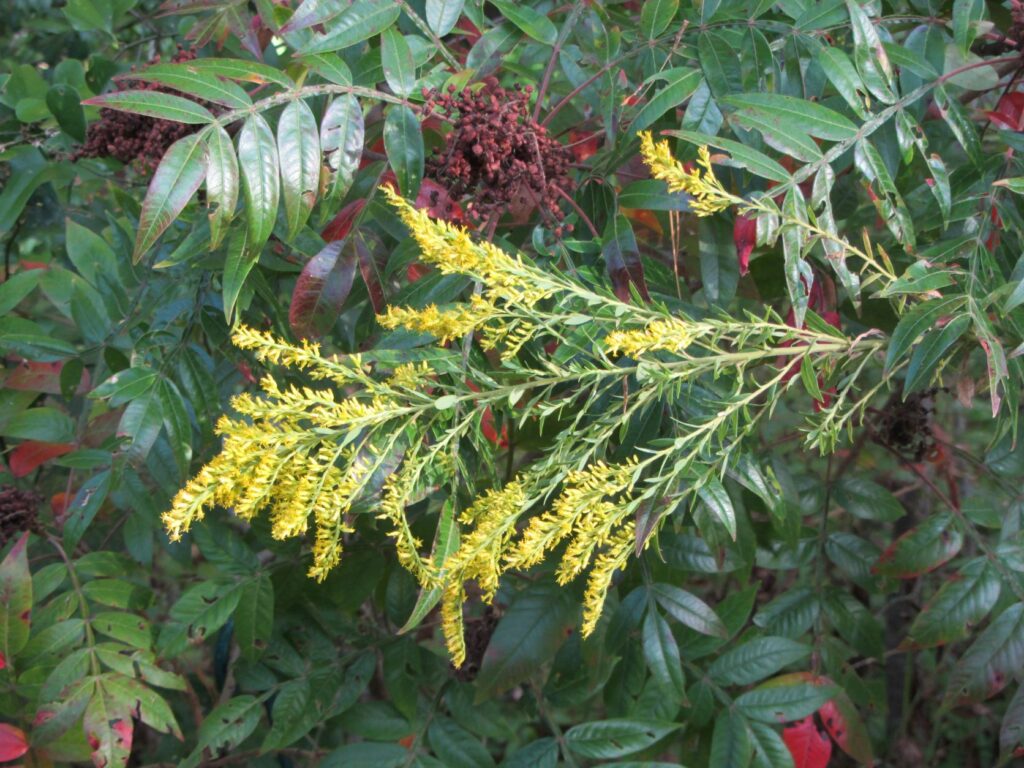
Rhus copallina and Solidago both spread aggressively on rhizomes. The wind, and birds, spread their seeds widely each fall.
When imported plants do this, we call them ‘invasive’ and avoid planting them. We also consider how persistent a plant may be, and how easy or challenging it will be to remove if we need to move it, later. How will the plant look by the end of the season? We want a harmonious planting scheme to allow each plant its own space and time in the total picture.
We want our plants to thrive in our landscape. Native plants, so perfectly suited to feeding birds and insects, also feed deer, rabbits, and a variety of other native herbivores and omnivores. Deer grazing is as much of a problem in park lands as in our suburban yards. Native plants, including shrubs and trees, generally need protection from grazing deer. Grazing and other deer activity is an important reason for the decline of many native herbaceous and woody species. Sometimes planting a non-native tree, shrub or herb helps get around the deer problem.
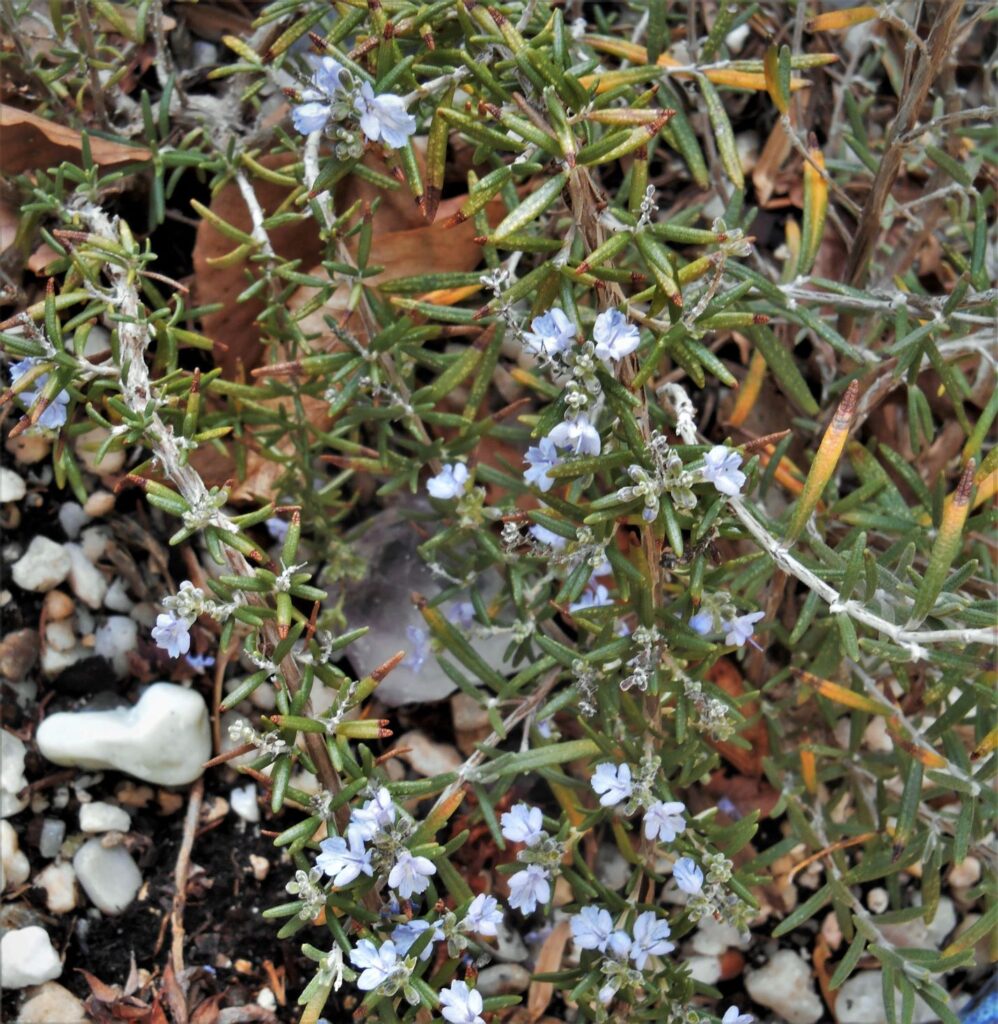
Prostrate rosemary blooms in winter, supporting pollinators. The oils in its foliage make it unattractive to herbivores, but very attractive to us for use in cooking. Photo from January 2021
Let’s broaden our understanding of plant choice. First, we need a vision of the purposes we want to accomplish with the plants we grow. If we want to support butterfly reproduction, we will plant the species certain butterflies require, whether that is a paw paw tree, a fennel plant, or a patch of milkweed. If we want a low-water, low maintenance garden, we can choose Mediterranean evergreen herbs, succulents, Carex, evergreen ferns in dry shade, and perhaps some native Yucca plants in full sun.
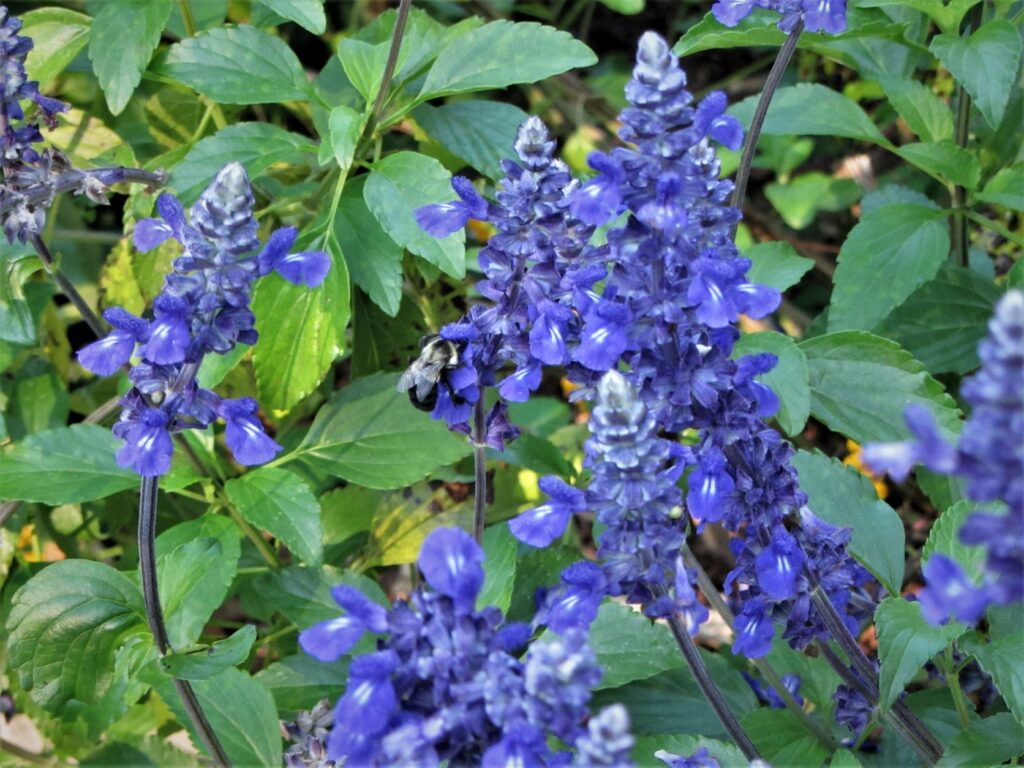
Hybrid Salvia ‘Mystic Spires’ is always one of the busiest plants from May through frost, feeding a wide variety of pollinators. It is drought tolerant and deer resistant. Photo from July 2022
Here is a useful list of considerations to guide your plant selection:
The gardener’s need and intent
The plant’s purpose and use
Potential invasiveness or area of spread
Potential crowding of other, native, plant species
Support for indigenous wildlife
Adaptability to local conditions
Right plant: Right place
Those of us with space for gardens can grow many different types of plants, switching things out year to year. We’ll have great success with some plants while we feel a bit of failure with others. Ultimately, our environment dictates what we can and can’t grow. We all have limiting factors, like dry shade, clay soil, deer, voles, HOA rules, and limitations of time, energy, funding and space. We need a certain degree of knowledge and skill to succeed with specialist plants, like orchids and roses.

Lantana camara ‘Chapel Hill Gold’ attracts butterflies, hummingbirds, and a wide variety of pollinators from May through frost. Originally native to the Southeastern United States from South Carolina to Texas, Lantana has begun to naturalize in our area, feeding birds and providing shelter through the winter months.
But most importantly, we want to enjoy the gardening experience. We can grow our own understanding and appreciation of the natural world, right alongside the many plants we choose. A garden is a curated space tended for the pleasure of the gardener, and it is filled with all manner of beautiful and useful things.
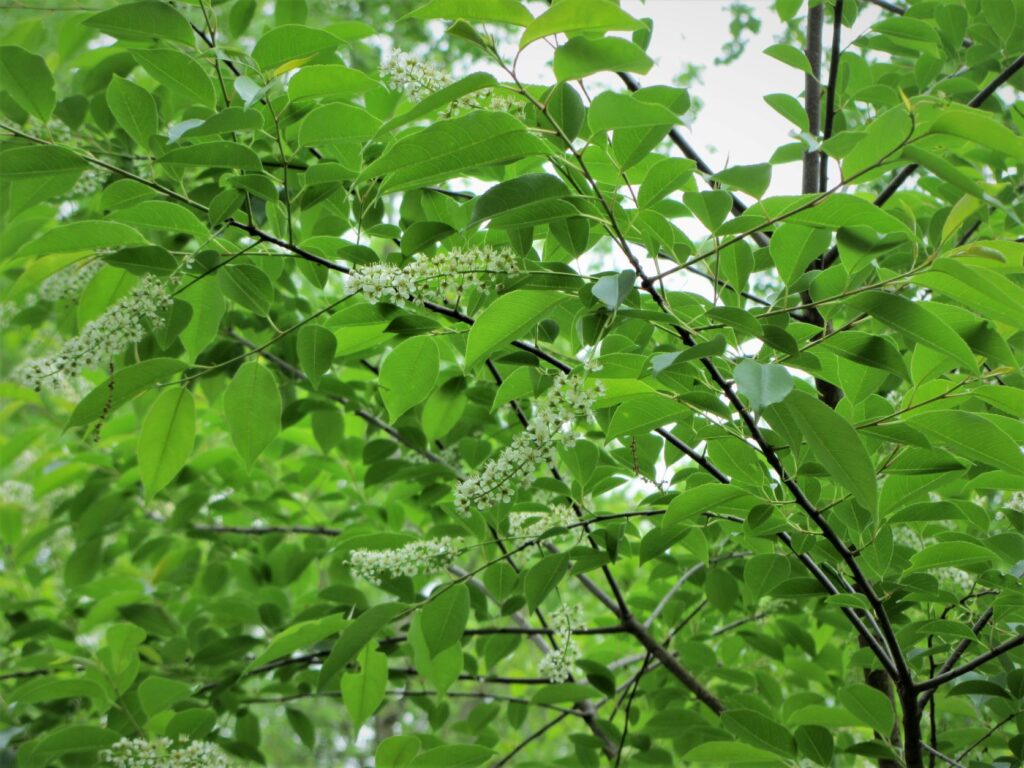
Native black cherry is one of the most highly prized keystone plants for wildlife. It supports 340 species of lepidoptera, feeds native pollinators, and produces fruit beloved by birds in late summer.
Top Ten Keystone Native Trees and Shrubs for Our Region
Quercus– oaks
Acer– maples
Prunus– cherries
Pinus– pine
Carya– hickory
Populus – cottonwood
Malus– apple
Betula– birches
Vaccinium– blueberries and huckleberries
Salix– willow
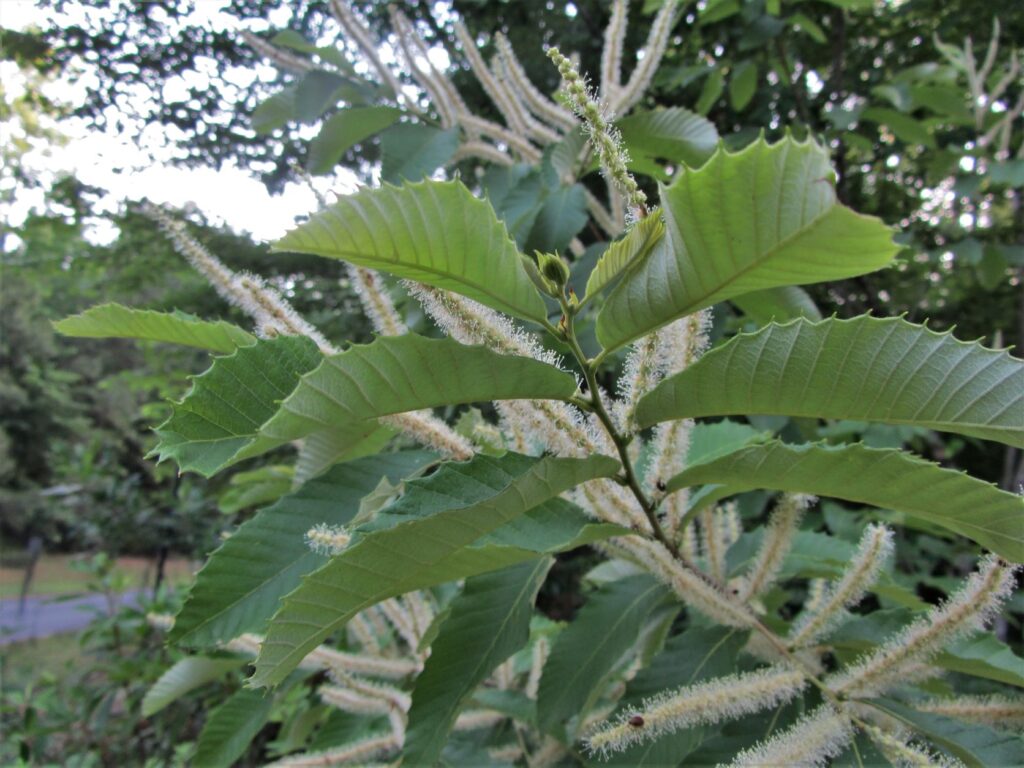
Some important native woody species, like American chestnuts and Allegheny chinquapins, are dying out because they are attacked by imported diseases or insects. It is important to plant and protect these native species so they don’t completely die out.
Top Keystone Native Ornamental Perennials for Our Region
Solidago
Rudbeckia
Symphyotrichum
Helianthus
Coreopsis
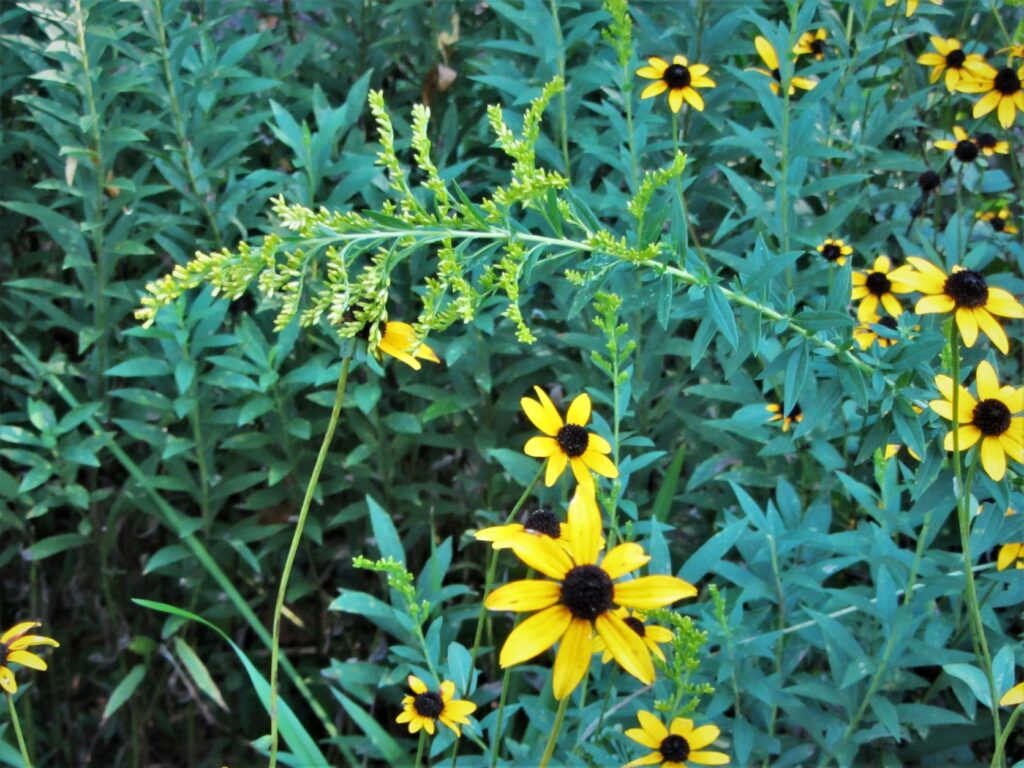
Rudbeckia hirta blooms in late summer and feeds goldfinches from its seeds well into the winter months. It supports 20 lepidoptera species and 29 types of specialist native bees that rely on its pollen.
All photos by Elizabeth McCoy
Elizabeth McCoy is a JCCW Master Gardener Tree Steward and a former Williamsburg Botanical Garden and Freedom Park Arboretum volunteer.
Appreciation to the WBG & FPA, where many of these photos were taken.
Resources to Learn More:
Darke, Rick. The American Woodland Garden: Capturing the Spirit of the Deciduous Forest. Timber Press 2002.
Darke, Rick and Douglas Tallamy. The Living Landscape: Designing for Beauty and Biodiversity in the Home Garden. 2014.
Dove, Tony, Ginger Woolridge. Essential Native Trees and Shrubs for the Eastern United States. 2018.
Druse, Ken. The New Shade Garden: Creating a Lush Oasis in the Age of Climate Change. 2015.
Mellichamp, Larry. Native Plants of the Southeast: A Comprehensive Guide to the Best 460 Species for the Garden. 2014.
Tallamy, Douglas. Nature’s Best Hope: A New Approach to Conservation That Starts in Your Yard. 2020.
Vogt, Benjamin. A New Garden Ethic: Cultivating Defiant Compassion for an Uncertain Future. 2017.
Digital Atlas of the Flora of Virginia

